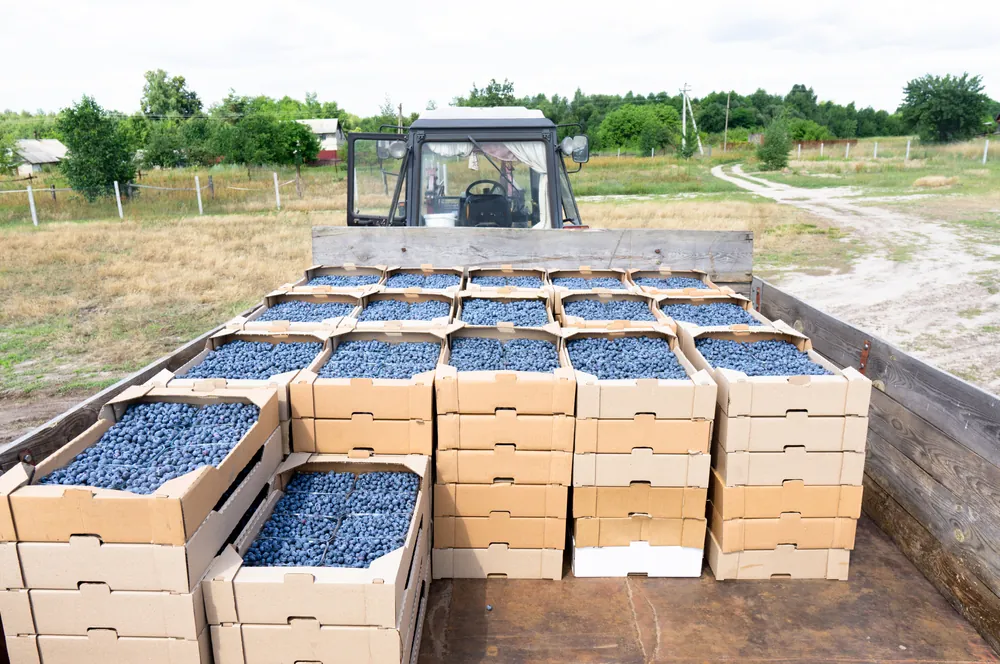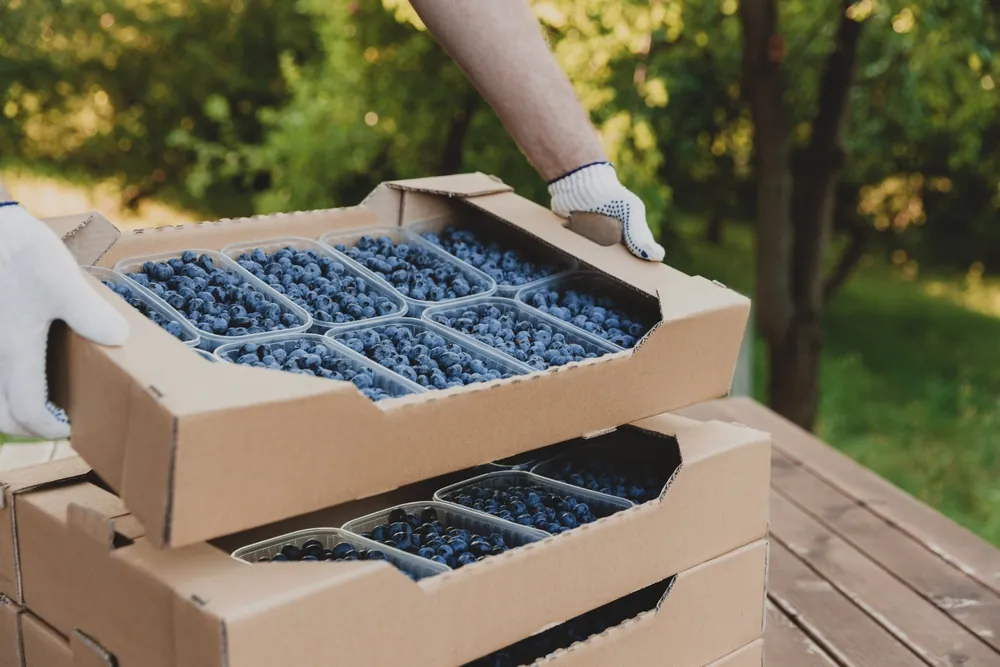
Shipping Blueberries in the United States
The United States remains the world’s largest importer of blueberries, with weekly domestic shipments originating from key states such as California, Oregon, and Washington. As of 2022, the blueberry market continues to thrive, with a substantial purchase amount estimated at nearly $1.5 billion. Central California takes the lead with blueberry harvests in April during the first half of the high season, while Oregon and Washington step in during the beginning of June to supply the remaining demand.
Trucking serves as the primary mode of transportation for blueberries across the United States, with additional shipments arriving from Mexico to meet consumer demand. The industry has witnessed significant growth in recent years, with an estimated 350 million pounds of fresh blueberries sold in the U.S. market. A majority of these shipments, approximately 70%, originate from domestic sources, while imports from South America and other regions contribute to the remaining market share. This dynamic landscape underscores the importance of efficient logistics and transportation networks in ensuring the timely delivery of blueberries to consumers nationwide.
5 Main Types of Blueberries
Canada And The US Likely To Remain Unmatched
In thousands of tons, Other countries that produce high amounts of blueberries annually are Mexico;10,160, France;9,011; the Netherlands;5,498, Spain;5,000, Sweden;2,888, and New Zealand;2,718. After this, yearly national production drops dramatically for the rest of the world’s countries. The blueberries produced in Denmark equates to only 125 tons a year. Portugal musters a mere 255 tons, while Switzerland registers 308 tons of blueberries produced annually. Due to an already entrenched industry therein, a generally higher level of accessibility to land, and native climate conditions conducive to blueberry growth, it seems unlikely any country will challenge North America’s two leaders in blueberry output soon.
Preparing Your Blueberry Shipments
- After an excellent blueberry harvest, place the berries in a primary container, such as a plastic clamshell or bag.
- Get a rigid cardboard box for the previous containers and ensure all packages have vent holes. Vent holes allow moisture and ethylene to exit the box, preventing mold, diseases, and premature decay. In large quantities, ethylene is a gas; as a flammable substance, it can pose a serious risk. This makes ventilation and knowledge of the fruit essential. Shipping blueberries can also be compared to hauling hazardous materials (HAZMAT).
- Once you’ve placed the blueberries into the containers, consider placing an absorbent pad in the primary containers to absorb excess moisture.
- Stacking your containers is a crucial step in the packaging process. Done correctly, it minimizes shifting during shipping, ensuring zero movement. This is key to preventing any harm to your blueberries during transit.
- The final step in packaging your blueberries is sealing the box with glue or staples. To make palletizing the shipment more manageable, use the same-size box for each container.
Safe Handling of Blueberries
Like any produce being harvested, blueberries should be handled carefully and in a clean and sanitary environment once picked. Farmers and farm workers should practice clean, hygienic practices before and during the blueberry harvesting. Harvested blueberries should be stored in clean, sanitized containers between the field and their staging area. It is also important to avoid cross-contamination with other farm materials or chemicals. The produce should be transported in a clean vehicle using appropriate containers. Once transported from the field, blueberries should be handled carefully to avoid bruising.

How Do I Ship Fresh Blueberries Safely?
Blueberries are sensitive, and various things can damage them. They can attract diseases, freeze burn, or be smashed in shipping. Because of this, it is essential to prep and package your blueberries with extreme caution. Follow these steps to ensure your fresh blueberries’ transit is seamless.
How to Ship Frozen Blueberries
There are many hoops to jump through to ensure your blueberry harvest arrives unharmed and as fresh as when picked. Luckily, when shipping frozen blueberries, there is a lot more leeway. Frozen Blueberries have a hardened consistency, allowing for looser packaging requirements. In addition, the fruit’s frozen nature allows for longer transit times compared to the quick turnaround of fresh blueberries. Like fresh blueberries, frozen berries must be transported using reefer trailers or any other temperature-controlled hauling vehicle. Transporting temperature-controlled goods can be tricky, so choose a carrier with experience and knowledge of the produce they are preparing to haul.
Let FreightCenter Help Ship Your Fresh or Frozen Blueberries
FreightCenter has over 20 years of experience helping shippers transport produce throughout the United States. Whether fresh, frozen, or processed, FreightCenter’s team of trusted shipping experts is here to help you with all your blueberry shipping needs. Need unique add-ons or have specific pickup or delivery requests? No problem! Just tell your shipping agent what services you need, and we will do our best to provide those for you. Ready to ship? Call us at 800.7167.608, or run a free online quote today!
